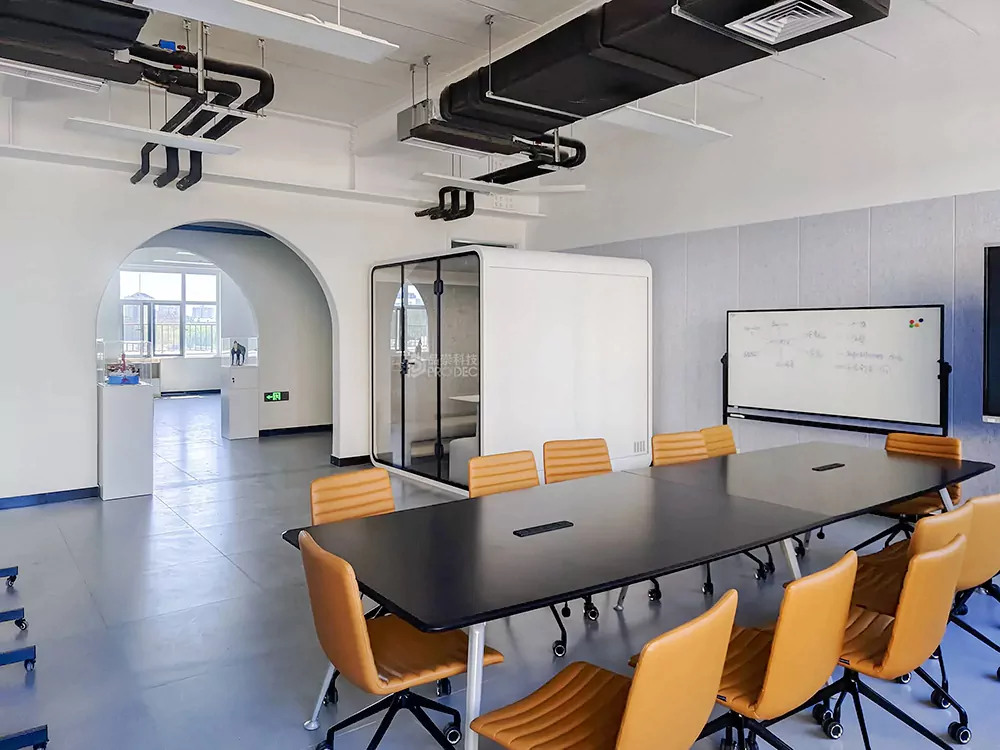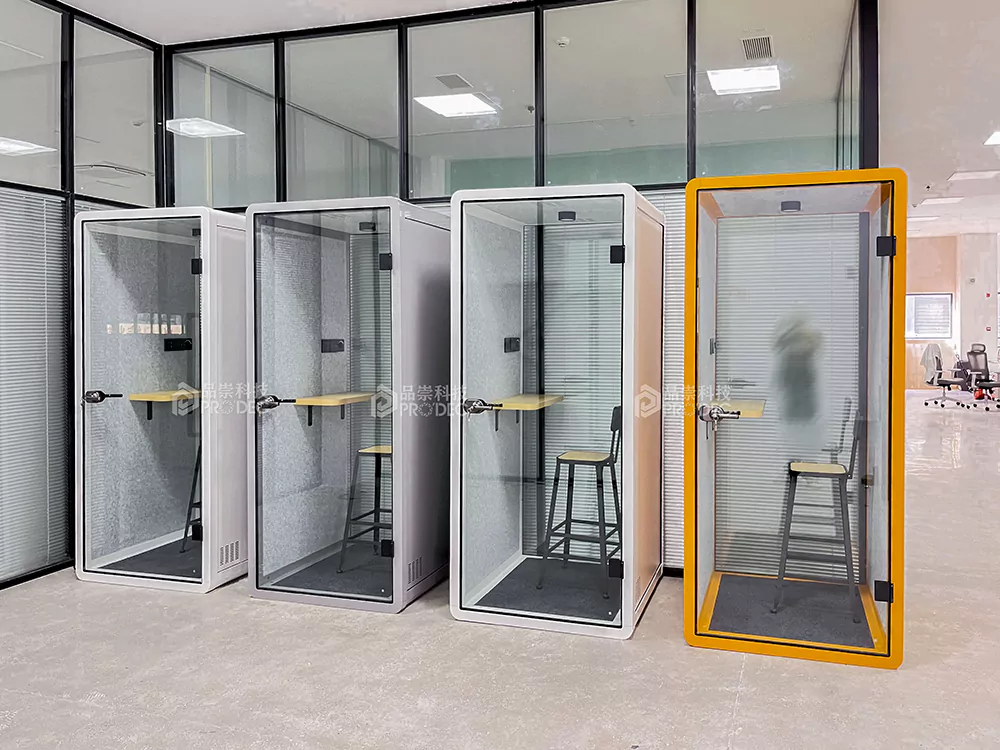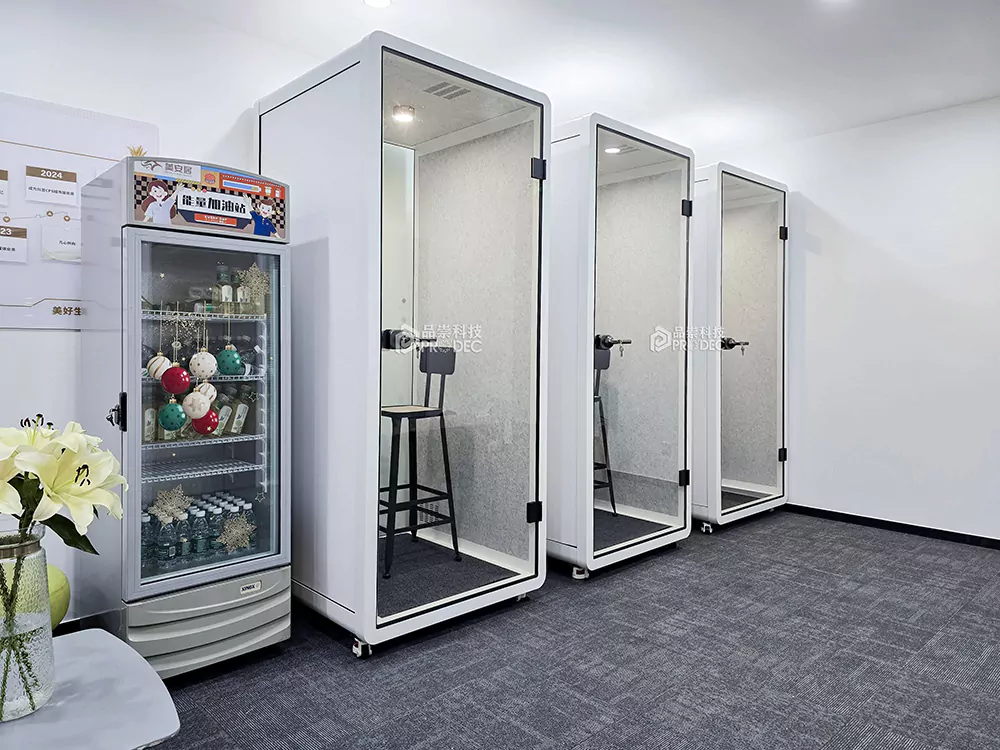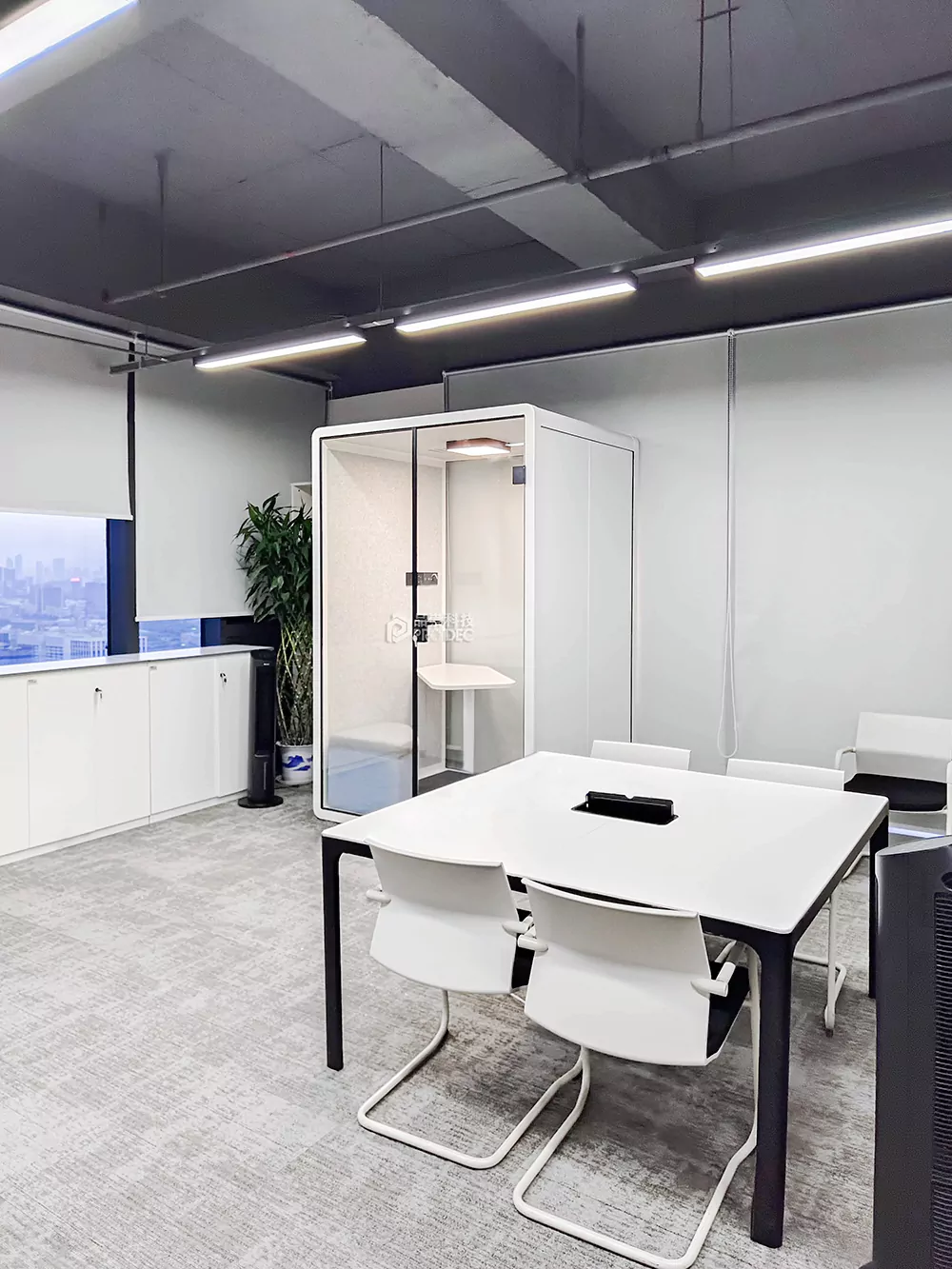Silent Booth Office is the choice for focused work in open spaces
What Is a Silent Booth Office and Why Is It Gaining Popularity?
In today’s fast-paced, collaborative work environments, finding a quiet space to concentrate can feel like searching for a needle in a haystack. Enter the silent booth office—a compact, sound-insulated pod designed to provide privacy, reduce noise distractions, and enhance productivity. These self-contained units are quickly becoming a staple in modern offices, co-working spaces, hotels, and even homes.
A silent booth office is more than just a phone booth with a desk. It’s a fully engineered acoustic environment that blocks out ambient noise, allowing users to take calls, record audio, focus on deep work, or simply enjoy a moment of peace. With open-plan offices contributing to rising noise levels and employee distraction, these booths offer a practical solution. According to recent market data, demand for modular soundproof pods has surged, especially in tech hubs and creative industries where mental focus is critical.
What sets the silent booth apart is its combination of smart design and advanced materials. Most models feature double-glazed safety glass, high-density acoustic panels, and ventilation systems that maintain air quality without compromising sound insulation. Some even include customizable LED lighting and USB charging ports, making them as functional as they are quiet. Whether you’re in a bustling city office or a hybrid workspace, a silent booth provides a personal retreat that supports both well-being and performance.
Key Features That Define a High-Performance Silent Booth
Not all silent booths are created equal. To truly deliver on the promise of a distraction-free workspace, certain technical and ergonomic features are essential. Let’s break down what makes a top-tier silent booth office stand out in a crowded market.
First and foremost is l'isolation acoustique. Premium models boast internal sound reduction of 30–35 dB, effectively muffling conversations, keyboard clatter, and background music. This is achieved through multi-layered walls filled with acoustic foam and sealed door mechanisms. The external insulation (typically around 15 dB) ensures the booth itself doesn’t become a noise source for others.
Ventilation is another critical component. A silent fan system or discreet air vent keeps the interior fresh without generating noise that could disrupt focus. Overheating or stuffiness can quickly make a booth unusable, so efficient airflow design is non-negotiable.
Most modern silent booths are built with a steel structure for durability and stability, while the front and back panels use 10 mm impact-resistant safety glass for visibility and security. Interior finishes are often sleek and modern, with options for customizable colors and lighting—some even offer color-changing LEDs to match brand aesthetics or mood settings.
Additionally, many units come with practical add-ons: integrated power outlets, USB ports, adjustable tables, castor wheels for mobility, and modular designs that allow for easy assembly and relocation. These features ensure the booth isn’t just quiet—it’s also comfortable, accessible, and adaptable to various workplace needs.
Where Can You Use a Silent Booth Office?
The versatility of a silent booth office is one of its greatest strengths. While originally designed for corporate environments, these acoustic pods have found applications far beyond the traditional office.
In corporate offices, they serve as private meeting rooms, phone booths for remote calls, or quiet zones for focused tasks. Employees no longer need to book conference rooms for short video meetings or struggle to concentrate at their desks. In co-working spaces, silent booths are premium amenities that attract freelancers and remote workers looking for reliable, private workspaces.
But their use extends to other sectors too. Hotels are increasingly installing them in lobbies or business centers to offer guests a quiet place to work or attend virtual meetings. Educational institutions use them for student study sessions or language practice. Hospitals and clinics deploy them for patient consultations or staff breaks. Even stadiums and transportation hubs are exploring their potential as private communication zones.
At home, a silent booth can function as a dedicated home office pod, eliminating distractions from household noise. For content creators, it doubles as a mini recording studio. The modular nature of many models means they can be installed indoors or outdoors, making them suitable for apartment balconies, garden offices, or pop-up workspaces at events. This wide range of applications underscores their role as a flexible, future-ready solution for modern life.
Customization and Design Options for Your Workspace
One size doesn’t fit all when it comes to workplace wellness—and that’s where customization comes in. Today’s silent booth office solutions offer a high degree of personalization to match both functional needs and aesthetic preferences.
Manufacturers often provide a range of colors—from classic black, white, and grey to bold options like orange and blue—allowing businesses to align the booths with their brand identity. Some even offer “colorful” multicolor finishes or the ability to print custom graphics on the exterior.
Interior layout is equally flexible. While standard dimensions hover around 105x100x230 cm, many brands offer extendable or convertible models. You can choose between single-person pods and larger configurations that accommodate small team meetings. Tables may be fixed or adjustable, and seating can range from a simple stool to ergonomic chairs.
Smart features are also part of the customization package. Options include motion-sensor LED lighting, Bluetooth speakers, touchscreen controls, and even climate regulation. For tech-forward companies, integration with room booking systems via apps or QR codes adds another layer of convenience.
Moreover, because most booths are modular and freestanding, they can be easily reconfigured as office layouts evolve. There’s no need for permanent construction—just position the unit, plug it in, and it’s ready to use. This adaptability makes silent booths an ideal long-term investment, with lifespans estimated at 15–20 years.
How to Choose the Right Silent Booth for Your Needs
With so many options on the market, selecting the right silent booth office can feel overwhelming. Here’s a practical guide to help you make an informed decision based on your specific requirements.

Start by assessing your primary use case. Are you looking for a space for private calls, focused work, or small meetings? If it’s mainly for phone calls, a compact single-user pod with basic ventilation and power outlets will suffice. For team discussions, opt for a larger model with a bigger table and enhanced acoustics.
Next, consider placement. Will the booth go indoors or outdoors? Indoor models typically prioritize aesthetics and integration with office design, while outdoor versions need weather-resistant materials and stronger structural integrity. Check whether the unit is freestanding or requires anchoring.
Budget is another key factor. Prices vary widely—from around $1,300 for entry-level models to over $4,500 for premium, fully loaded pods. However, bulk orders often come with discounts; for example, purchasing 20+ units might reduce the per-unit cost significantly. Payment options like T/T, L/C, or Western Union are commonly supported, especially for international buyers.
Finally, look for certifications. A ISO9001-certified product indicates adherence to quality management standards, which is a good sign of reliability. Also, verify warranty terms, customer support availability, and ease of assembly. Reading reviews or requesting a demo can further reduce the risk of a poor investment.
The Future of Work: Silent Booths as Essential Office Infrastructure
As hybrid and flexible work models continue to reshape the workplace, the role of the silent booth office is evolving from a luxury perk to essential infrastructure. Companies are realizing that employee well-being and productivity are directly linked to environmental control—and silence is a powerful tool in that equation.
Forward-thinking organizations aren’t just adding a few booths as afterthoughts; they’re integrating them into office design from the ground up. Architects and interior designers now treat acoustic pods as core elements of spatial planning, much like restrooms or break rooms. This shift reflects a deeper understanding of cognitive load and the cost of constant auditory distraction.
Looking ahead, we can expect silent booths to become smarter and more connected. Imagine AI-powered noise monitoring, automatic climate adjustment based on occupancy, or seamless integration with calendar apps that reserve the booth when a meeting is scheduled. Sustainability will also play a bigger role, with eco-friendly materials and energy-efficient ventilation systems becoming standard.
In essence, the silent booth is more than a physical space—it’s a symbol of respect for focus, privacy, and individual work styles. As workplaces continue to balance collaboration with concentration, these compact sanctuaries will remain a vital part of the solution. Whether you’re a startup founder, HR manager, or remote worker, investing in a silent booth isn’t just about buying furniture—it’s about creating a culture of clarity and calm.
本文由人工智能技术生成,基于公开技术资料和厂商官方信息整合撰写,以确保信息的时效性与客观性。我们建议您将所有信息作为决策参考,并最终以各云厂商官方页面的最新公告为准。






